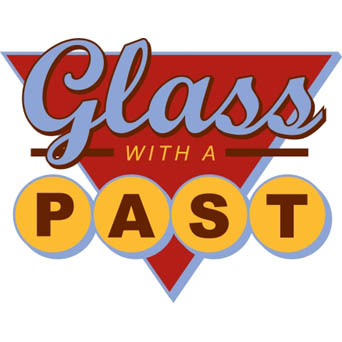When is a closed book completely transparent? When it’s a glass book, of
course!
Recently I had the opportunity to create some pretty awesome recycled glass
awards in the shape of books for the Utah Campus Compact recognition awards.
The criteria were to fit within a strict budget, be environmentally friendly if possible and have the capacity to be personalized.
After a quick experiment, I felt confident that I had something to fit the
bill. Here is photo of my proposal piece. The cover is bent, but the pages are still loose. The printing is done with a set of Martha Stewart scrapbook stamps.
Utah Campus Compact officials loved it! Off we went to make 49 more, each one a unique combination of institutions, award names and award recipients. The only thing that was constant was the date and the logo.
Step one was cutting a whole lot of glass pieces. Because each cover would be slumped and then filled with glass pages and tack fused together, all of the pieces for each book had to come from the same sheet of glass. That compatibility thing, you know.
Each book used an approximately 20″ x 30″ sheet of recycled window glass. Just to be on the safe side, I cut enough sheets for 53 books. Each book stack was numbered to correspond with the order that the covers went into the kiln to be slumped.

Here’s a whole bunch of stacks waiting to be washed and fused.
Then, into the kiln with the covers. The covers were slumped over kiln shelf slices wrapped in fiber paper and propped on kiln stilts. I could fit 14 at a time into Vera.

After slumping all of the covers and reuniting them with their pages, I set up the printing station.
The dies were made for me by Lyman Printing, and I want to give a shout out to Rick and co., for being faster AND less expensive than quoted. I strongly recommend them, great work guys!

Each book cover was printed with a sticky ink, and then black powdered glass was sifted over the sticky ink and the excess tapped off. The pages were stacked inside the cover, and the whole thing went into Vera.
Here is a shot pre-firing:
Luckily, there were a couple extra sets, because there were a couple of
tragedies, one of them a muddy printing, one a chipped cover that consequently
cracked, and two that didn’t have enough pages to adequately fill the cover.
Each book was then packed into a white mailer box with the recipient’s name on
the outside and a certificate telling about the origin of the glass tucked
inside.
whew. Job well done team. Go ahead and take a break, read a book or something.



